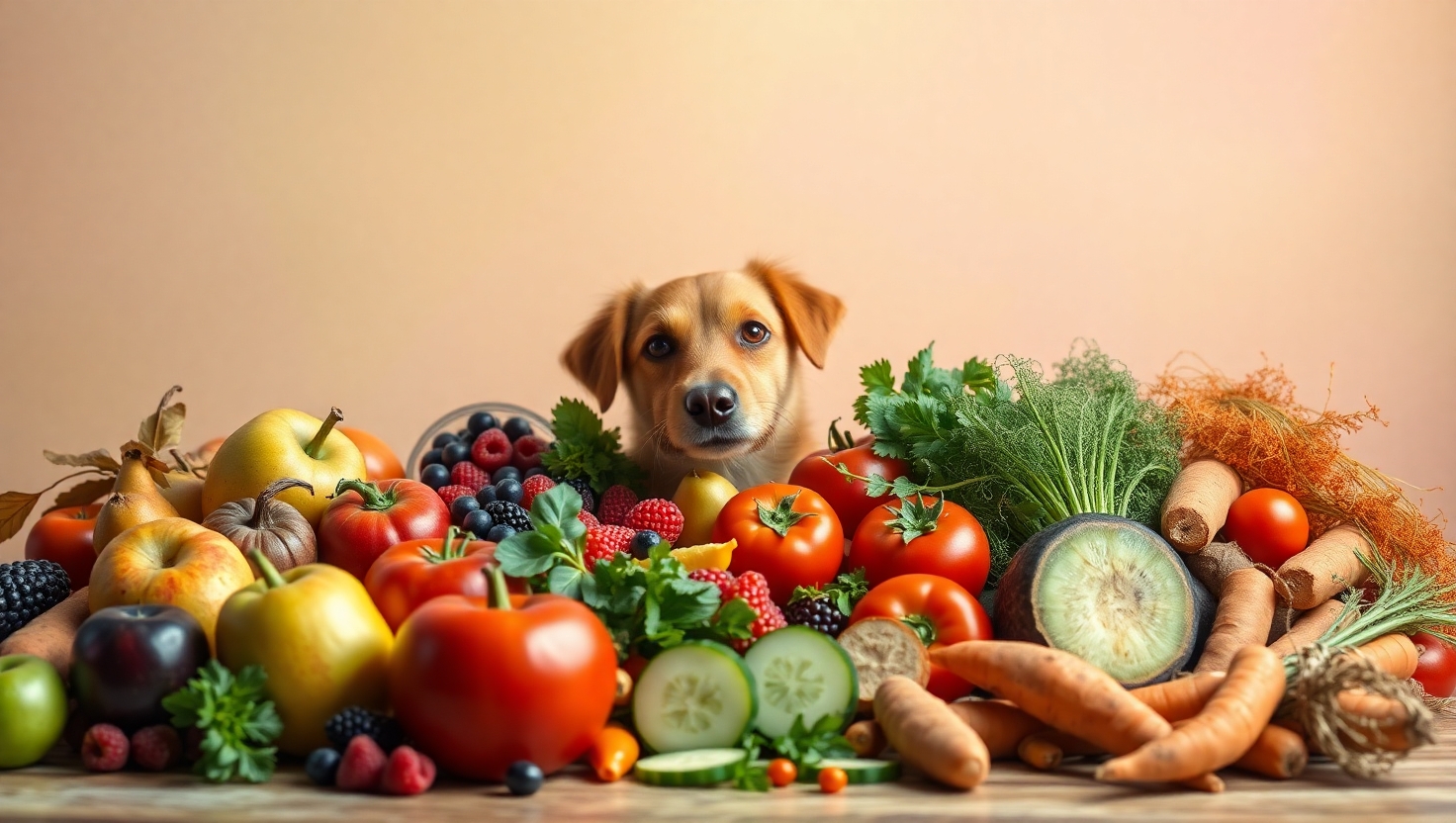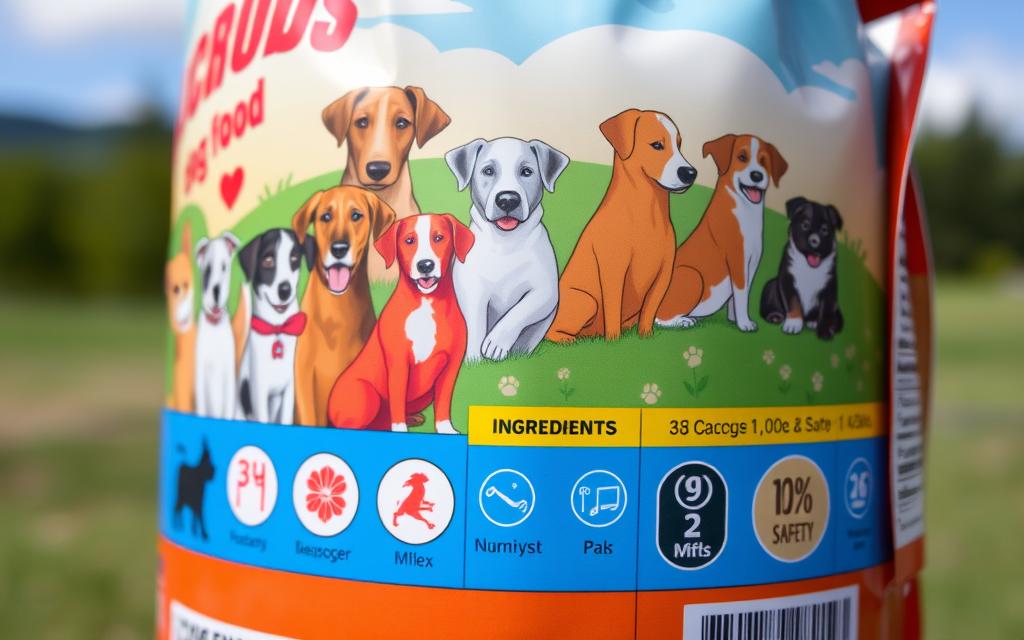Seasonal Foods for Dogs: What’s Safe and Beneficial During Each Season
Feeding your dog seasonal foods can not only boost their health but also keep mealtime exciting. Different fruits and vegetables come into season throughout the year, offering excellent nutritional benefits for your furry friend. Here’s a guide on what seasonal foods are safe and beneficial for dogs during each season.
Spring
As winter melts away, spring brings a variety of fresh produce that is perfect for your pup. Many of these foods are rich in vitamins and minerals.
- Peas: Fresh or frozen peas are a great source of vitamins A, B, and K, along with protein and fiber. They are low in calories and can be a delightful addition to your dog’s diet.
- Carrots: Crunchy and sweet, carrots are ideal for dogs. They can help clean their teeth and are full of beta-carotene, which is converted to vitamin A.
- Spinach: While it should be fed in moderation, spinach is packed with nutrients such as iron and calcium.
Try mixing these veggies into your dog’s usual food or serving them as tasty treats. Just remember to introduce new foods gradually to avoid stomach upset.
Summer
Hot summer days call for refreshing and hydrating snacks. Focus on fruits and veggies that help keep your dog cool.
- Watermelon: It’s hydrating and safe for dogs to eat, just be sure to remove the seeds and rind. It’s a fantastic source of vitamins A, B6, and C.
- Blueberries: These tiny berries are packed with antioxidants, fiber, and vitamin C. They can be a great low-calorie treat for your dog.
- Zucchini: This light vegetable is low in calories and a great option for weight-conscious dogs. You can serve it raw or cooked.
Consider freezing watermelon into small cubes for a cool treat on sweltering days. Your dog will love it!
Autumn
With the fall comes an abundance of harvest fruits and vegetables. These seasonal foods can provide necessary nutrients as the temperatures begin to drop.
- Pumpkin: This superfood is high in fiber and aids digestion. Plain, cooked pumpkin (not pie mix) can be a fun addition to your dog’s meals.
- Squash: Varieties like butternut or acorn squash are nutrient-dense and can be served cooked to make them easier to digest.
- Apples: Sliced apples make crunchy, sweet treats. Be sure to remove the seeds and core, as those can be harmful to dogs.
These foods can help bolster your dog’s immune system ahead of winter. The flavors and textures of fall produce will surely excite your pet at mealtime.
Winter
As the cold winter months approach, it’s vital to ensure your dog’s diet is rich in nutrients that support their immune health. However, winter foods can also provide warmth and comfort.
- Sweet Potatoes: Packed with beta-carotene, sweet potatoes provide energy and improve your dog’s digestive health. Cook them thoroughly and serve mashed or in small cubes.
- Brussels Sprouts: These mini cabbages are safe for dogs when cooked. They can help with digestion and are rich in fiber, vitamins, and minerals.
- Fish: Oily fish like salmon or sardines can provide essential fatty acids that are great for your dog’s coat and skin during dry winter months.
Feeding your dog seasonal foods not only satisfies their taste buds but can also enhance their overall well-being. Each season brings fresh options that can fit easily into their diet. Always remember to introduce new foods slowly and consult your vet if you’re unsure what is best for your pup. By keeping these seasonal foods in mind, you can ensure your dog enjoys a healthy and varied diet year-round.
How to Incorporate Fresh Seasonal Ingredients into Your Dog’s Diet
Fresh seasonal ingredients can greatly enhance your dog’s diet, providing them with essential nutrients while keeping their meals exciting and flavorful. By incorporating fruits and vegetables that are at their peak during different seasons, you can ensure that your furry friend is getting a variety of vitamins and minerals while also enjoying the best that nature has to offer. Here’s how you can introduce fresh seasonal ingredients into your dog’s meals throughout the year.
During spring, a variety of fresh greens become available, making it an ideal time to add new flavors to your dog’s diet. Consider using:
- Spinach: This leafy green is packed with iron, calcium, and vitamins A, C, and K. Mix a small amount into your dog’s food for added nutrition.
- Asparagus: A tasty vegetable that can be steamed and cut into small pieces, asparagus is rich in vitamins and fiber.
- Peas: These are a great source of protein and can be added fresh or frozen to your dog’s meals.
Summer is a time for juicy fruits and refreshing veggies that can help keep your pet hydrated. Popular options include:
- Watermelon: Remove the rind and seeds, then serve small, bite-sized pieces. Watermelon is low in calories and high in vitamins A, B6, and C.
- Blueberries: Rich in antioxidants, blueberries can be a great snack or topping for your dog’s food.
- Cucumbers: These are low in calories and help keep your dog cool on hot days. Slice them thinly for a crunchy treat.
As fall arrives, your dog’s meals can benefit from hearty ingredients that are both nutritious and comforting. Consider these fall favorites:
- Pumpkin: A superfood for dogs, pumpkin is high in fiber and great for digestion. You can use canned pumpkin or cook fresh pumpkin and add it to meals.
- Sweet Potatoes: Packed with vitamins A and C, sweet potatoes can be baked, mashed, or served in cubes.
- Apples: Be sure to remove the seeds and core before feeding small apple pieces to your dog. They are a good source of vitamins A and C.
Winter is a time when fresh ingredients might be less available, but there are still nutritious options to consider. Frozen fruits and vegetables can be a practical choice, but here are a few seasonal ideas:
- Carrots: These are available year-round and make a crunchy, healthy treat for your dog. They promote dental health and are low in calories.
- Brussels Sprouts: Packed with vitamins, these can be steamed and chopped into your dog’s food but should be given in moderation to avoid gas.
- Beets: They are rich in nutrients and can provide a sweet flavor. Cooked and diced beets can be a lovely addition to your dog’s bowl.
To ensure that your dog can safely enjoy these seasonal ingredients, always start with small amounts to monitor for any adverse reactions, especially with new foods. It’s a good idea to consult your veterinarian before introducing any major dietary changes. Mixing fresh ingredients into your dog’s regular food can also help them transition smoothly to new flavors. Here are some tips for incorporating these seasonal ingredients:
- Mix and Match: Combine both fresh ingredients and your dog’s current food to create a balanced diet.
- Cook When Necessary: Some vegetables, like carrots and sweet potatoes, can be more palatable when cooked.
- Be Creative: Use seasonal fruits and vegetables in homemade treats, smoothies, or as toppings to keep meals interesting.
By incorporating fresh, seasonal ingredients into your dog’s diet, you are not just benefiting their health but also enhancing their mealtime experience. Make sure to rotate the foods according to the season, taking advantage of nature’s bounty to keep their diet varied and flavorful. Remember, a balanced and nutritious diet can lead to happier, healthier pets, so get creative this season!
Understanding Allergies and Sensitivities: Seasonal Foods to Avoid
As loving pet owners, it’s our responsibility to ensure the health and well-being of our furry friends. One important aspect to consider is their diet, especially regarding allergies and sensitivities that may arise throughout the seasons. While we want to share tasty and seasonal foods with our dogs, it’s crucial to understand which items might be harmful or triggering. By being mindful of potential allergens, you can provide a safe and enjoyable eating experience for your pup.
Common allergens for dogs can include certain proteins, grains, or artificial additives. Allergies manifest in various ways, such as skin irritation, gastrointestinal upset, or even respiratory symptoms. It’s important to recognize these signs and assess your dog’s reactions to different foods, especially when introducing seasonal items. Here are specific foods associated with each season that you should be careful about feeding your dog.
Spring
Spring brings a delightful array of fresh foods, but it’s also a time when many allergens become more prevalent.
- Pollen-rich foods: Foods that are highly rich in pollen, such as certain flowers and weeds, can cause heightened sensitivities. Stick with familiar fruits and veggies, like carrots or apples, instead.
- Spring greens: While leafy greens like spinach or kale are healthy, they can irritate some dogs’ stomachs. Monitor your dog for any gastrointestinal troubles after consumption.
- New proteins: Spring often sees a rise in dog owners trying new proteins like lamb or venison. If your dog has not had these before, introduce them slowly to avoid possible reactions.
Summer
The summer sun brings fun outdoor activities and yummy foods that may tempt you to share with your dog.
- Grilled foods: Summer barbeques are lovely, but be cautious of spices or condiments used in marinated meats, which can be harmful to dogs. Always offer plain, grilled meats without additives.
- Certain fruits: While watermelon is an excellent summer treat, be wary of stone fruits like peaches and plums. Their pits can be dangerous and cause choking hazards or intestinal blockages.
- Ice cream: While dogs might love the taste, many ice creams contain lactose, which can upset the stomach of lactose-intolerant dogs.
Autumn
As the leaves change, so does the selection of seasonal foods that might tempt both you and your dog.
- Pumpkin spice: While pure pumpkin is beneficial for dogs, be cautious of pumpkin spice products. They often contain sugar and other ingredients that can provoke sensitivities.
- Rich harvest foods: Foods like acorns and pecans can be toxic if ingested in large quantities. Keep an eye from a distance as your furry friend explores the ground.
- New flavors: Fall often introduces new flavors in packaged dog treats. Always check labels to ensure there aren’t any ingredients that might trigger sensitivities.
Winter
Winter is a cozy season, filled with hearty foods. However, some items can be detrimental to your canine companion.
- Holiday treats: While it’s tempting to share holiday baked goods, many ingredients such as chocolate, raisins, and xylitol are toxic to dogs.
- Fatty foods: Rich, fatty foods can lead to pancreatitis in dogs. Be careful not to offer your pup leftover holiday feasts.
- Seasonal snacks: Many seasonal snacks, such as those rich in citrus, can upset your dog’s stomach. Stick to dog-friendly treats like sweet potatoes or carrots.
By keeping a watchful eye on what foods your dog encounters seasonally, you can help prevent allergic reactions or sensitivities. Identifying safe and beneficial seasonal foods allows you to keep your furry friend happy and healthy. Remember to introduce any new foods gradually and consult your veterinarian if you’re unsure about certain items. Your dog’s health is the top priority, so focus on providing wholesome, seasonal offerings that fit within their dietary needs.
Nutritious Homemade Dog Treats Using Seasonal Ingredients
Creating homemade dog treats that utilize seasonal ingredients is a wonderful way to give your furry friend nutritious snacks all year round. Using fruits, vegetables, and herbs that are at their peak can enhance flavor and health benefits. Let’s explore how to craft tasty, nutritious dog treats using seasonal foods.
Spring Treats
As the flowers bloom and the weather warms, spring gives you a fantastic variety of ingredients to incorporate. Consider using:
- Carrots: Packed with vitamins A and C, they are great for dog’s vision and skin health.
- Peas: A great source of protein and fiber, perfect for keeping your pup energized.
- Blueberries: These tiny fruits are full of antioxidants, making them a brain-boosting treat!
A simple recipe for spring treats could be carrot and blueberry cookies. Blend 2 cups of finely grated carrots, 1 cup of mashed blueberries, and 2 cups of whole wheat flour. Add a bit of water to form a dough, roll it out, and cut into shapes. Bake at 350°F for 20 minutes for a crunchy delight.
Summer Delights
Summer introduces us to a bounty of fresh fruits and vegetables. When creating treats during this season, consider these options:
- Watermelon: Hydrating and low in calories, this fruit can be pureed or cut into small, safe pieces.
- Cucumber: Refreshing and crunchy, cucumbers are great snacks rich in hydration.
- Basil: This herb not only adds flavor but also has anti-inflammatory properties that can be beneficial.
Try making watermelon and cucumber popsicles! Blend 2 cups of watermelon and 1 cup of diced cucumber, pour the mixture into ice cube trays, and freeze. These are perfect for cooling off on a hot day!
Autumn Bites
As the leaves change color and fall approaches, there are delicious autumn ingredients to use:
- Pumpkin: A great source of fiber and vitamins, pumpkin is excellent for your dog’s digestion.
- Apples: Full of vitamins A and C, apples are a crunchy treat, just be sure to remove the seeds!
- Sweet Potatoes: Nutrient-rich and naturally sweet, they provide energy and are great for skin health.
For a tasty autumn treat, mix 1 cup of pure pumpkin puree, 2 cups of mashed sweet potatoes, and 1 ½ cups of oatmeal. Form into balls and bake at 350°F for about 30 minutes. Your dog will love these seasonal munchies!
Winter Wonders
When winter arrives, cozy flavors and hearty ingredients come to mind. Consider these winter foods for your canine companion:
- Carrots again: They’re available year-round and can be roasted for a warm treat.
- Brussels Sprouts: Rich in vitamins and minerals, these can be steamed and chopped into dog-friendly pieces.
- Oats: A comforting ingredient that is great as a base for various treats.
A lovely winter recipe can be carrot and oat biscuits. Combine 1 cup of grated carrots, 1 cup of oats, and an egg. Form dough, shape it into small flattened rounds, and bake at 350°F for 25 minutes. These soft, warm biscuits are perfect for chilly days.
Homemade dog treats made with seasonal ingredients not only provide delicious variety but also ensure that your pet receives the nutrients they need. Always make sure to introduce new foods gradually and consult with your veterinarian for any specific dietary needs or restrictions. Your dog will appreciate the effort, and you’ll enjoy the bonding experience of cooking for your furry friend!
The Benefits of Feeding Your Dog with Seasonal Foods for Overall Health
 Feeding your dog seasonal foods can be a delightful way to ensure their diet is varied, nutritious, and aligned with nature’s offerings. Each season brings a unique selection of fruits, vegetables, and proteins that can provide health benefits specific to the time of year. Understanding how to incorporate these seasonal foods into your dog’s diet can improve their overall health and vitality.
Feeding your dog seasonal foods can be a delightful way to ensure their diet is varied, nutritious, and aligned with nature’s offerings. Each season brings a unique selection of fruits, vegetables, and proteins that can provide health benefits specific to the time of year. Understanding how to incorporate these seasonal foods into your dog’s diet can improve their overall health and vitality.
Spring is a time of renewal, and this is reflected in the fresh produce available for your furry friend. Many spring vegetables, such as peas and carrots, are packed with vitamins and minerals. Peas are high in protein and fiber, which can help with digestion, while carrots offer important nutrients like beta-carotene for healthy vision.
Additionally, herbs like parsley and mint start to flourish during spring. Parsley can support urinary health and freshen your dog’s breath. Mint can also aid in digestion and help with bad breath. You can easily add small amounts of these herbs to your dog’s meals as a tasty boost.
As the weather warms up and summer arrives, fresh fruits become abundant. Fruits such as watermelon, blueberries, and strawberries are not only hydrating but also rich in antioxidants. Watermelon is great for hydration, especially on hot days, as it is composed of mostly water and is low in calories. Blueberries are another fantastic choice because they are incredibly rich in vitamins C and K and are thought to support brain health.
Just remember to remove any seeds or pits from fruits like apples and peaches, as these can be harmful to your dog. Portion control is key; offering small amounts can help avoid any digestive upset while your dog enjoys the flavors of summer!
As autumn approaches, many people turn to harvesting seasonal vegetables such as pumpkins and squash, both of which are not only tasty but also beneficial for your dog’s health. Pumpkin is famous for its high fiber content, which can aid in digestion. It’s also packed with vitamins A, C, and E, which are essential for your dog’s immune system and skin health. Squash can provide similar benefits, and many dogs enjoy its sweet taste. Both can be served cooked and mashed or pureed in meals.
Autumn also means an array of root vegetables is available, like sweet potatoes and carrots. Sweet potatoes are rich in vitamins B6 and C, as well as potassium and fiber, making them an excellent addition to your dog’s diet. They can be served baked or boiled, and most dogs find them irresistible.
When winter arrives, it’s often a time for hearty and warming foods. Some winter root vegetables, like carrots and turnips, remain available and are a good source of nutrition for dogs. However, it’s also essential to consider protein sources during the winter months. Lean meats such as turkey or chicken can be beneficial for energy and mood.
In winter, dogs may also benefit from foods rich in omega-3 fatty acids to help keep their skin healthy and their coats shiny. Offer foods like fish (such as salmon) or flaxseeds that can be incorporated into their meals.
Here’s a quick reference list of seasonal foods you can safely include in your dog’s diet:
- Spring: Peas, carrots, parsley, mint
- Summer: Watermelon, blueberries, strawberries (remove pits/seeds)
- Autumn: Pumpkin, squash, sweet potatoes, carrots
- Winter: Root vegetables (carrots, turnips), turkey, chicken, salmon, flaxseeds
The benefits of feeding your dog seasonal foods are abundant. Fresh, in-season foods can be more nutrient-dense and easier for your dog to digest. They can also help maintain a balanced diet with freshness that store-bought foods may lack. You get to enjoy cooking for your pup while they benefit from tasty and healthy ingredients. Remember to introduce any new food gradually and consult with your veterinarian if you have concerns about any dietary changes. Embrace the seasons and give your dog a well-rounded diet that reflects the changing world around them!
Conclusion
Embracing seasonal foods for dogs can significantly enhance your furry friend’s health and happiness throughout the year. By incorporating fresh, seasonal ingredients into their diet, you can provide a variety of nutrients specifically tailored to their needs during each season. This not only supports their immune system but also keeps their meals exciting and flavorful.
Understanding potential allergies and sensitivities is crucial when introducing new foods. Always monitor your pet for adverse reactions and consult your veterinarian if you have any concerns. The right seasonal choices can protect your dog from certain allergens while still providing delicious and nutritious options.
Creating homemade dog treats using seasonal ingredients is another great way to bond with your pet while ensuring they receive wholesome nutrition. Simple recipes using fruits and vegetables that are in season can be both fun and beneficial, allowing you to tailor treats to your dog’s preferences and needs.
Feeding your dog seasonal foods doesn’t just treat them to tasty meals; it contributes to their overall well-being. By choosing ingredients that are naturally available at different times of the year, you’re promoting seasonally appropriate nutrition that can lead to better digestion, increased energy, and a more vibrant life.
As you explore the world of seasonal dog food, remember that variety is key. Adapting your dog’s diet with fresh, seasonal ingredients can lead to a healthier, happier companion. So, with each season, take the opportunity to discover and share the bounty nature has to offer your beloved pet.




